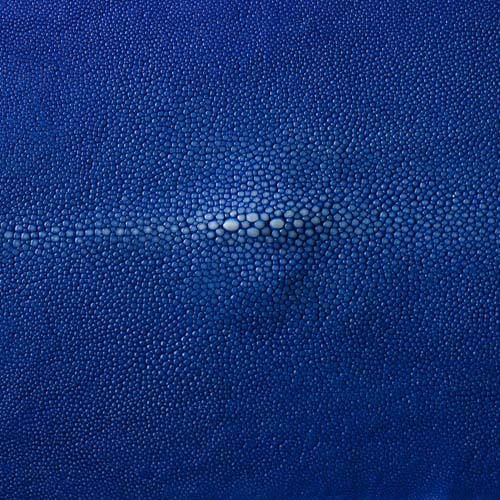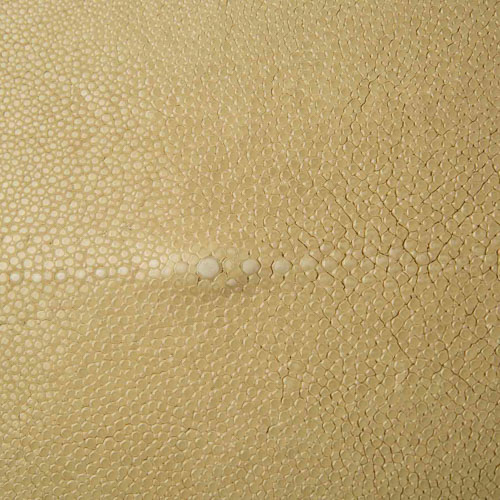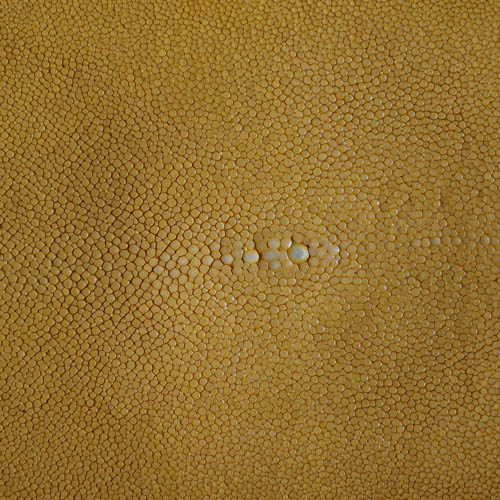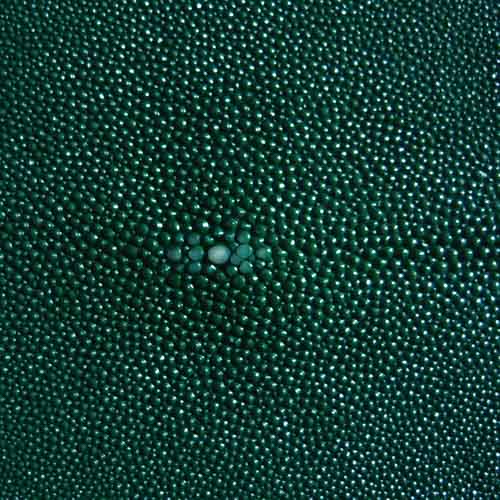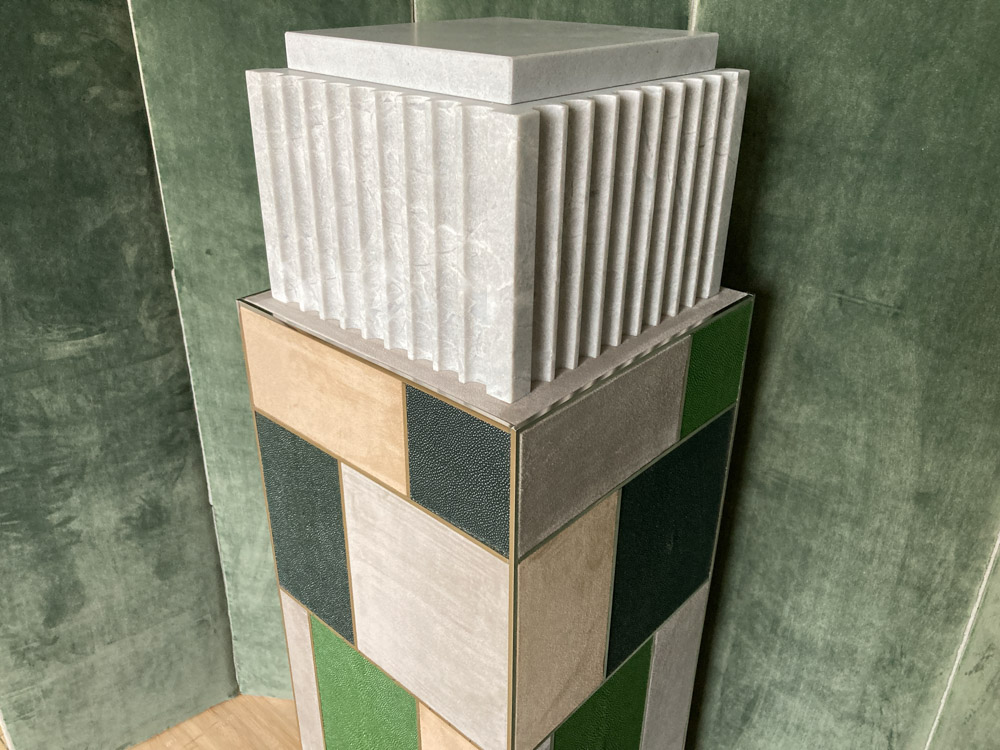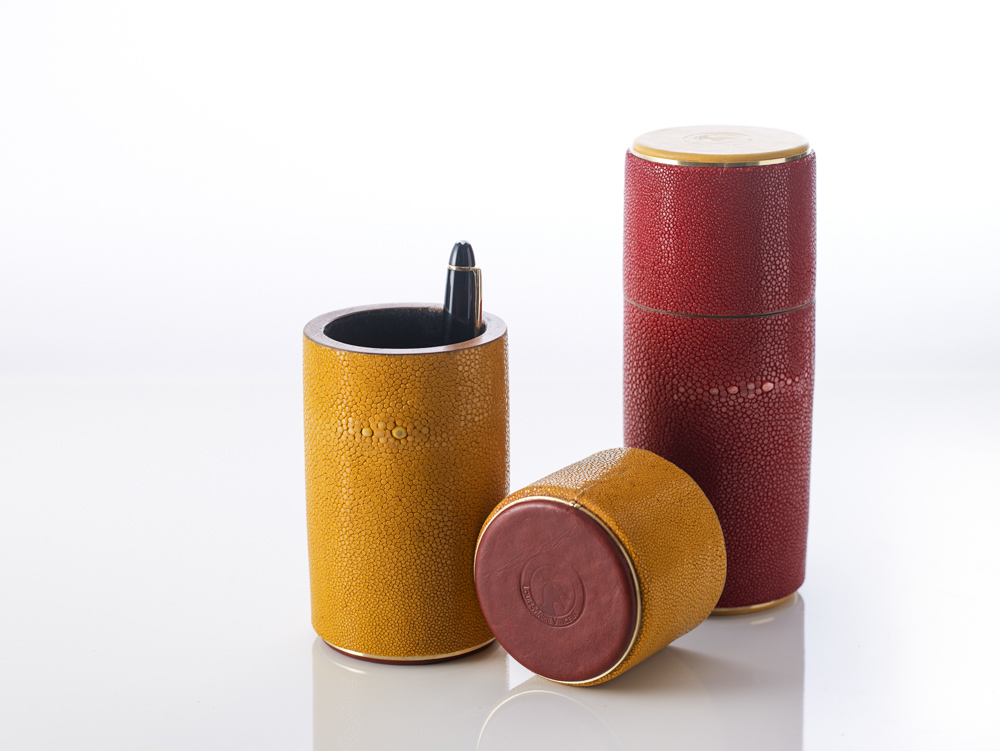
The term “shagreen” is mistakenly associated with a particular species of shark or ray, but in fact it originated with an 18th-century French sheath-maker who was a master in the art of working these dogfish and ray skins, which have retained the name “shagreen” ever since.
Dogfish and stingray skins were mainly used in a greenish hue as trim for cases and boxes containing all kinds of small, more or less precious and utilitarian objects.
For commercial reasons, 18th-century sheath-makers mainly used dogfish skin, as it was readily available in the surrounding seas and oceans. Sephen skate was used very rarely, and only for very fine objects, as it lived only in the Indo-Pacific, and imports were limited. England, the world’s leading seafaring power, was the place to go for French gainiers.
In the 19th and 20th centuries, thanks to the boom in trade with the Orient and the French colonies, Parisian workshops were able to import the Sephen ray. In the first half of the 18th century, the sheath-maker Jean-Claude Galluchat rediscovered the technique of using skate and shark skins, long discovered by the Orient.
Appearing around 1740, this craze seems to have lasted until the end of the 18th century, then faded with the French Revolution and the Empire style.
Paul Iribe is credited with developing the use of shagreen in fine furniture. The great cabinetmakers of the inter-war years, such as Clément Rousseau, André Groult, Adolphe Chanaux and Ruhlmann, brilliantly restored shagreen to its former glory and, thanks to the modern staining techniques used in cabinetmaking, deployed a wide range of colors.
Shagreen fell into oblivion shortly after the Second World War, judged to be a luxury material incompatible with a new modern lifestyle and new industrialized production methods.
MAISON LOUIS-MARIE VINCENT, with its perfect mastery of the sheathing technique, has chosen to restore shagreen to its place in its creations.
